
Station Name: CARMARTHEN JUNCTION
|
| Date opened: | 11.10.1852 |
| Location: | West side of A484 |
| Company on opening: | South Wales Railway |
| Date closed to passengers: | 27.9.1926 |
| Date closed completely: | 7.6.1965 |
| Company on closing: | Great Western Railway |
| Present state: | Demolished - the down platform is extant with a warehouse standing on it. The fomer station master's house (now called St. Peter's House) is in private occupation, |
| County: | Carmarthenshire |
| OS Grid Ref: | SN409187 |
| Date of visit: | Not visited |
Notes: The South Wales Railway was the first to reach Carmarthen. The railway was built to ship coal from the South Wales valleys to London, and secondly to complete Brunel's vision of linking London with New York; additionally the scheme would be financially rewarding immediately to the south Wales coal industry and to operators of ferries to Ireland. The initial part of the line between Chepstow and Swansea was opened on 18 June 1850, with trains operated by the Great Western Railway under a lease agreement. At the eastern end of the line the connection to Gloucester and London was completed in July 1852 when the bridge at Chepstow was finished. Once trains had reached Swansea the next goal was Carmarthen. Construction of the line west of Swansea was delayed, due to the financial problems of the late 1840s, and the abandonment of construction of the Irish railways that would have connected with the Fishguard ferries at Waterford. The western terminus of the line was changed from Fishguard to New Milford (Neyland). The company had hoped to build their Carmarthen station at John's Town on the west side of the town but this would have required a bridge over the River Towy which would delay completion of the line. Instead, the company opted for a temporary station at Myrtle Hill to the south of the town, and construction started there with the arrival of a shipment of timber in May 1852. After the official opening, public services began on 11 October 1852 with the first train leaving Carmarthen at 6.30 a.m. As this was before the arrival of the first train from Swansea an engine had to be shedded at the station overnight. To accommodate this, a wooden engine shed was provided to the south of the station close to the River Towy; this was built c. April 1852 during the construction of the line. The engine shed was short-lived and was blown down during a severe storm four months later. A replacement brick-built three-road shed was constructed by a local contractor. The shed was sited to the north of the station on the up side, opposite the goods yard, and was ready for use by the time the station opened. Goods services to Carmarthen initially consisted of a 7.15 am departure for Paddington and a down goods for Carmarthen that left Chepstow at 6.30 am. Although often referred to locally as Myrtle Hill the station was always officially called Carmarthen. In December 1852 another severe gale stripped the roof off the timber carriage shed. The station quickly proved popular, with excursions operated both from and to the town, and many local people took their first opportunity to spend a day at the seaside. As well as local excursions some went further afield, including an excursion to London in 1853 to see the 'Grand Military Spectacle' at Cobham. This excursion left Carmarthen at 6.00 a.m. and arrived in London at 4.30 p.m. It returned a week later. One incoming excursion brought a party of two thousand teetotallers from Aberdare. Despite the popularity of the new service there were numerous complaints about the inconvenient siting of the station to the south of the town. These came largely from the town’s tradesmen who had the added expense of transporting goods from the station to the town; the road was soon very busy with horse-drawn traffic. For the convenience of passengers, two local inns provided a horse-drawn bus service to meet each train. To cater for the high demand the owner of the Ivy Bush Inn transferred his stable of seventy horses from Swansea to Carmarthen. The second line to Carmarthen was finally completed on 11 February 1853, and the company was keen for construction to proceed quickly westwards; this required a bridge over the River Towy. The Carmarthen town council was insistent that this bridge should not impede river navigation. To avoid this Brunel designed a two-span drawbridge, one end of which could be lifted hydraulically before being rolled back onto the rails. The next stage of the construction took the line to Haverfordwest, with the official opening of the single-track extension taking place on 17 December 1853. Public services ran from 2 January 1854 when Carmarthen ceased to be a terminus. A railway finally reached the centre of Carmarthen in 1860. The Carmarthen & Cardigan Railway opened the first mile of their line on 1 March 1860 from a junction with the SWR north of Carmarthen station to a temporary terminus in the centre of the town. On 1 July 1860 the SWR station was renamed Carmarthen Junction; at one time the station was also known as Carmarthen Junction Road. A second signal box was sited at the actual junction. The engine shed closed on 11 February 1907 and was demolished in August 1909. Its replacement was a standard Churchward six-road building with a large workshop which opened on 11 February 1907 close to the third Carmarthen station, near the town centre. Carmarthen Junction station closed on 27 September 1926, but remained open until 7 June 1965 as one of two goods stations serving the town. BRIEF HISTORY OF THE CARMARTHEN & CARDIGAN RAILWAY The Carmarthen & Cardigan Railway Company was formed in 1854 to promote a broad gauge railway from a junction with the SWR at Carmarthen. Initially the line would terminate at Newcastle Emlyn, a distance of 26¾ miles, later to be extended 12 miles to Cardigan where the company intended to build a deep-water port. The Carmarthen & Cardigan Railway was incorporated by an Act of 1 July 1854 to build the line between Carmarthen and Newcastle Emlyn. There was authorised capital of £300,000 with powers to borrow a further £80,000. City of London-based contractor John Jay was employed to build the line. Jay's previous railway contracts included Stoke-on-Trent railway station, and a section of the Great Northern Railway north of King's Cross together with King's Cross goods station and passenger terminus; these were all built around 1850. The line was to be constructed in two stages, with the first 18-mile section linking Carmarthen and Llandyssil. Work started a mile south of Carmarthen following the ‘turning of the first sod’ in March 1857; a junction was made with the South Wales Railway at Myrtle Hill, just north of Carmarthen station. The main engineering obstacles facing engineer Joseph Cubitt were the construction of a crossing over the River Towy at Carmarthen and the excavation of a tunnel between the valleys of Skanda Vale and Dolgran, under the Brechfa Forest south-west of Pencader. During construction in 1859, the C & CR attempted to switch from broad gauge to standard gauge, which would have meant that all railway infrastructure could be built to smaller (and thus cheaper) dimensions. Such a change would require the approval of Parliament, and pressure was put on the company by the South Wales Railway which did not want the rival standard gauge making an incursion on its territory; a Bill authorising this change of gauge was never put before Parliament.
Progress north now slowed owing to problems during the construction of the 895yd Pencader tunnel (also known locally as Alltwalis Tunnel and Dolgran Tunnel). The digging required two construction shafts which could then be used for ventilation. Construction started in the spring of 1857, and digging initially proceeded from four sites - at either end and from the bottom of both ventilation shafts. Work was expected to be completed by December 1860/January 1861. The tunnel was 'finished' in March 1861 although, at that time, it was exposed rock without a brick lining and required further work to complete it. The long approach cuttings were also unfinished. During construction of the tunnel, many of the horses used to haul away excavated rock died from disease and were buried in the field surrounding the northern of the two shafts. The same field also has grassed-over rubble remaining from cottages built by the construction navvies. Much of the spoil excavated was used to build embankments north and south of the tunnel, but large spoil heaps can still be seen on the hillsides around both ventilation shafts.
Further delays were caused by the original contractor, John Jay, abandoning the construction of the line in autumn 1861. By November, however, another contractor, Holdens, took over the construction. Work was then focused on finishing several miles of railway either side of the tunnel and, although easy to the north, to the south heavy engineering of cuttings and embankments slowed progress. The 12-mile extension to Cardigan was authorized by an Act of 1 July 1863 but it was never built. Track is known to have been laid through Pencader Tunnel at some point prior to December 1863. An official Board of Trade inspection was carried out in January 1864, and the tunnel opened with the rest of the Llanpumpsaint-Pencader section on 28 March 1864. At that time the tunnel was still unlined, and a watchman was employed to inspect it for any rock falls until it was eventually lined with brick some years later. The line reached Llandyssil, a further 3½ miles, on 3 June 1864 with a service of four trains in each direction, taking approximately 70 minutes between Carmarthen Town and Llandyssil. Most trains started or completed their journeys at Carmarthen Junction station. By now the high cost of construction, especially Pencader Tunnel and the purchase of two tank engines from Rothwell & Co, had drained the company’s resources and it was forced into bankruptcy. A Receiver was appointed to run the railway without any interruption to the service. In 1860 the Manchester & Milford Railway received Royal Assent to build a line from the C & CR at Pencader to Llanidloes. In 1861 a route was proposed north, mainly along the east side of the River Teifi valley from Pencader to Devil’s Bridge. There, a junction station would be constructed, with the main line proceeding to Llanidloes, and a branch line to Aberystwyth. By late 1864 the proposed route had changed, moving west from the original plan. This would result in both a shorter route to Llanidloes, and relocating the junction station from Devil’s Bridge to a new junction station near Ystrad Meurig. Parliamentary approval for the new route, to be built to standard gauge, was received in 1865 Work on the southern section of the line progressed rapidly, and the line from Pencader to Lampeter was opened on 1 January 1866. The M & MR made a junction with the C & CR half-a-mile north of Pencader. However, because of the gauge difference the two lines didn't actually join, and a new interchange station called Pencader Junction was opened with the new line. The next section from Lampeter to Strata Florida was completed by 1 September 1866, and the final section to Aberystwyth by August 1867. The South Wales Railway had been taken over by the GWR in 1862. By that time broad gauge was in decline and, in order to allow through running between the C & CR and the newly opened M & MR, the 13¾ miles from Abergwili Junction to Pencader Junction were altered to mixed gauge on 1 November 1866. The M & MR was given running rights into Carmarthen, but its trains were not permitted to call at intermediate stations. The C & CR directors regained control of their line in 1867. The remainder of the line to Llandyssil was converted to standard gauge on 1 June 1872, and all broad gauge running ceased from that date.
In September 1869 the C & CR formed a new company for extending the line to Newcastle Emlyn and eventually on to Cardigan, but the proposed extension failed to get sufficient local support. An approach was made to the London & North Western Railway to buy the line and build the extension to Newcastle Emlyn, but nothing came of this. In 1881, a Bill was put before Parliament authorising the C & CR to extend its line to Newcastle Emlyn, reduce the number of directors, and sell or lease its undertaking. On 4 March 1881 an Agreement leasing the C & CR to the GWR was approved by the House of Lords. Under GWR control the service was reduced to three down trains between Carmarthen and Llandyssil, but still four up trains The M & MR timetable of the same date showed three through trains in each direction between Carmarthen and Aberystwyth, with an extra morning service in each direction between Carmarthen and Lampeter. On 1 July 1882 the C & CR was absorbed into the GWR. All the necessary land for the extension was purchased by April 1885 but the GWR, who had been reluctant to build the line, ensured that work progressed as slowly as possible, taking over ten years to reach Newcastle Emlyn. The extension finally opened on 1 July 1895 with one intermediate station at Henllan. The long-awaited railway was given a riotous reception by the townspeople and traders of Newcastle Emlyn. The opening train was decorated with flags and flowers, and in the afternoon about two thousand people sat down to tea in the New Market House. In the evening a grand banquet was held in the Emlyn Arms Hotel.A further extension to Cardigan was now ruled out, largely because of opposition to the intrusion of the line into an area of natural beauty that had become a popular tourist attraction. Consequently the GWR had to make do with a motor bus service from Newcastle Emlyn to Cardigan. A second intermediate station called Pentrecourt Platform opened on 1 February 1912.
The Manchester & Milford Railway was leased by the Great Western in 1906 and absorbed in 1911. Carmarthen to Aberystwyth then became the main line, with the Pencader- Newcastle Emlyn line operated as a branch. The GWR opened a branch from Lampeter to Aberayron on 12 May 1911. The Newcastle Emlyn branch was never busy, but the new 'main line' thrived by serving the local farming and wool industries though, in the years following the First World War, this traffic gradually declined as local bus services were introduced. Between the wars the GWR provided camping coaches at several stations. The route earned a reputation as a meandering rural branch where trains trundled along, often flagged down by market-bound farmers' wives making their way across the fields to board the carriages. In fact, nearly three hours were permitted for the 56-mile journey between Carmarthen and Aberystwyth.The Second World War brought a new lease of life as a relief route providing a vital link for northbound traffic, with regular movements of heavy munitions to Chester. After the war the line settled back to a quieter existence. With the ever-increasing popularity of the car, especially after WW2, the Teifi Valley lines clearly had no future under a nationalised British Railways. The Aberayron branch was the first to lose its passenger service from 2 February 1951. Passenger services lasted a little longer on the Pencader-Newcastle Emlyn branch, with the last train running on 13 September 1952. The main line enjoyed a brief resurgence in the 1950s when the Royal Train traversed the route, and other new traffic included Butlins through-specials taking holidaymakers to the new camp at Pwllheli. By the end of the fifties, there were three weekday trains each way (four on Saturdays) with a journey time of around 2½ hours with 16 timetabled stops and another 5 request stops. Declining passenger figures meant that the Beeching Axe was inevitable; in the end, however, it was nature that struck the first blow. Heavy flooding severed the line six miles from Aberystwyth in December 1964, in the same weekend that storms caused the Ruabon to Barmouth Line to suffer a similar washout. The last passenger train ran along the truncated route south of Strata Florida on 22 February 1965; inexplicably the BR network map dated 1965 showed Pencarreg, rather than Strata Florida, as the temporary northern terminus. The line remained open for freight using Hymek locomotives until around 1970, then by Class 37 locomotives. Despite closure to passengers, the branch lines also remained open for freight traffic. Withdrawal of freight facilities at individual stations started in December 1963. By 1965 freight-handling had ceased at all stations except Lampeter and Newcastle Emlyn, which then became railheads. Scheduled for complete closure at the end of 1972, the Newcastle Emlyn branch received a number of reprieves. The Teifi Valley Railway Preservation Society was formed in October 1972 with the intention of purchasing the Carmarthen-Newcastle Emlyn section for the operation of a steam-hauled tourist passenger service. Special excursion trains were chartered from British Rail giving hundreds of people their first opportunity of travelling on the line and seeing for themselves the outstanding countryside through which it passed.
Negotiations were opened with British Rail for the purchase of both land and track, and a stay of execution was obtained on the lifting of the line. However, the enthusiasts were faced with two insurmountable problems. Month by month the price of the track increased, frequently by tens of thousands of pounds, only to be aggravated by a serious shortage of steel, which put railway track at a premium. The second problem was the lack of local interest and support. Although offers of help poured in from all over the country, local working parties rarely attracted more than a dozen-or-so people, from a total membership of 200. The end came in 1973 for both the Newcastle Emlyn branch and the main line from Carmarthen to Lampeter with the end of the milk traffic. The last passenger train over both lines was the RCTS Farewell to the Teifi Valley Milk Branches railtour on 30 December 1972. The freight that kept the main line open was dominated by milk traffic between Carmarthen and Lampeter, where trains were routed to the last remaining part of the main line to Aberystwyth as far as the creamery at Pont Llanio near Llanddewi-Brefi which survived until 1970; they also used the Aberayron branch as far as the creamery at Green Grove near Felin Fach, which remained in service until discontinued by British Rail in 1973; this resulted in the final closure of the line. Track was left in place until the summer of 1975. Two years after its closure, the Gwili Railway Preservation Company was formed with the ambition to preserve at least eight miles of track of the former route, from Abergwili Junction along the Gwili Valley to the station site at Llanpumpsaint. Track-lifting had already started by the time of the formation of the new company and, as a result, only a mile of track north of Bronwydd Arms was left in situ. The Company was, however, able to acquire the full eight-mile stretch of trackbed from Abergwili Junction to Llanpumpsaint for both rebuilding and preserving. Over time the railway has extended the operational length from one mile to 2½ miles, with its current northern terminus at Danycoed. The society is currently focusing its attention on a southward extension towards a proposed Carmarthen North station. Since the preservation society owns the trackbed as far as Abergwili Junction, two miles south of Bronwydd Arms, a new station can be constructed alongside the new Carmarthen eastern bypass. This will, hopefully, greatly improve visibility of the railway to passing traffic on this busy road compared to the less conspicuously sited Bronwydd Arms station. Once the southern extension of the Gwili Railway is complete, it will increase the length of the route to around 4½ miles. Reconnection with Carmarthen railway station is currently impossible as the bridge that once carried the line over the River Towy was demolished in the 1980s. Although attempts to preserve a standard-gauge line to Newcastle Emlyn were not successful, a restoration project eventually got under way in 1981 when a group of enthusiasts bought part of the trackbed at Henllan. In 1983, with the help of funding and labour from the Manpower Services Commission, they laid a 2ft-gauge track from Henllan to Pontprenshitw, where passengers were invited to take a short walk to admire the waterfall under the railway bridge. In 1987 the Teifi Valley Railway was extended as far as Llandyfriog and, since 2006, has been further extended to the current end of the line at Llandyfriog Riverside. During spring 2009 work proceeded to re-site Henllan station to its original location on the opposite side of the road. This new platform was brought into use in July 2009. Sources:
See other stations on the Carmarthen & Cardigan Railway: Carmarthen 1st, Carmarthen 2nd STILL OPEN, Bronwydd Arms, Conwil, Llanpumpsaint, Pencader, Pencader Junction, Llandyssul, |
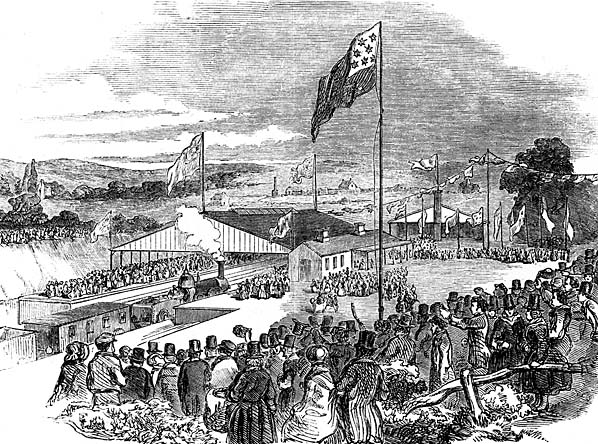

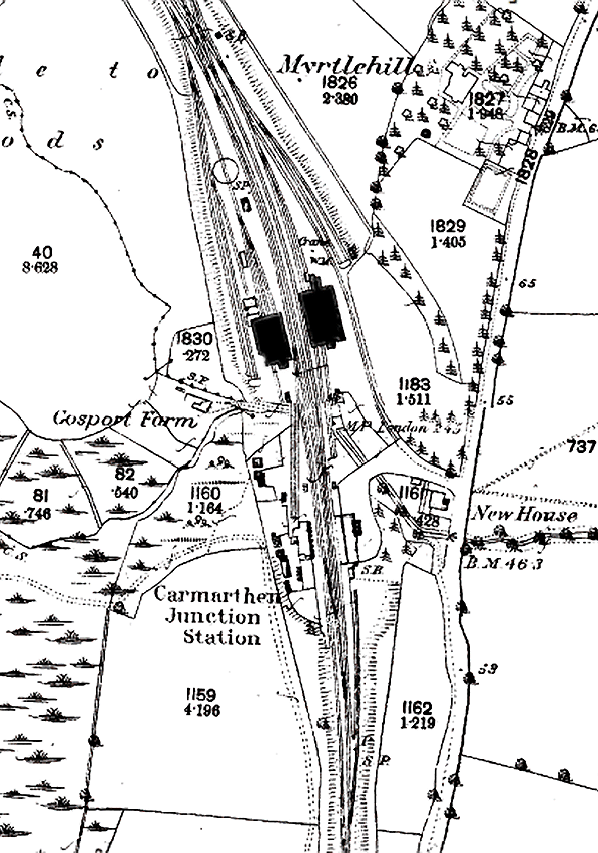
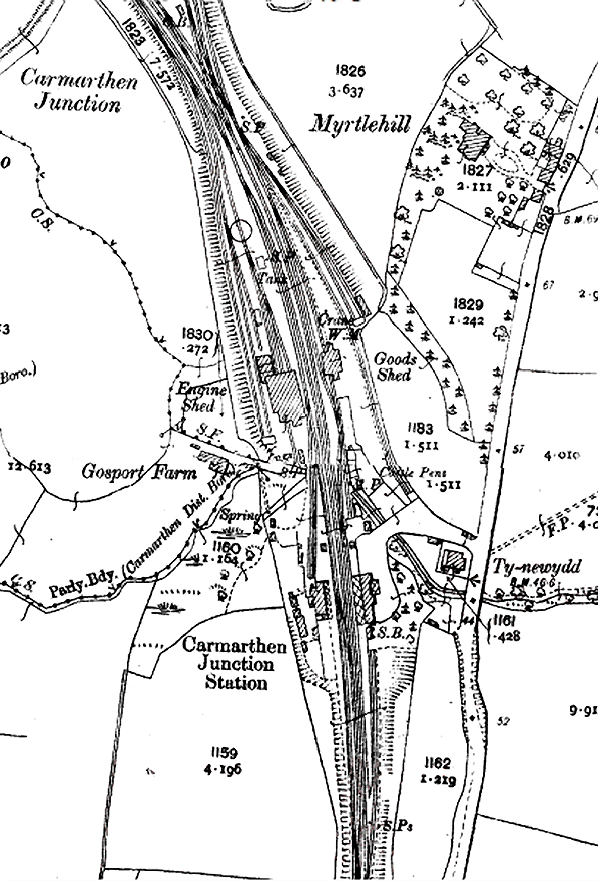
junction1.jpg)
Photo from John Mann collection
junction3.jpg)
on the down platform.
Photo by John Mann
junction2.jpg)
on the down platform.
Photo by John Mann
junction4.jpg)
Photo by Martin Potter
junction5.jpg)
Photo by Martin Potter
junction.jpg)
Photo by Danny Scroggins from Danny Scroggins Signalling Photographs web site
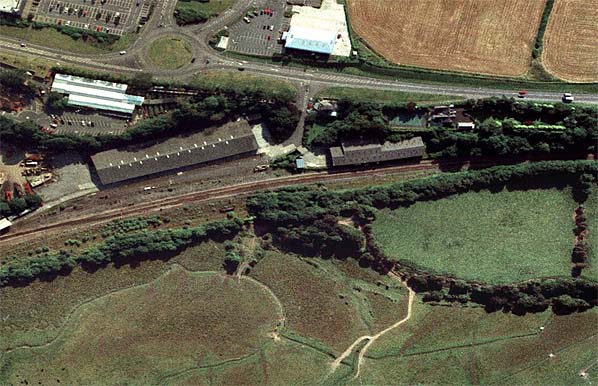
| Last updated: Wednesday, 17-May-2017 09:06:11 CEST |
© 1998-2012 Disused Stations
|
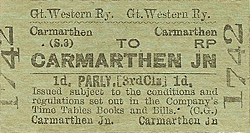
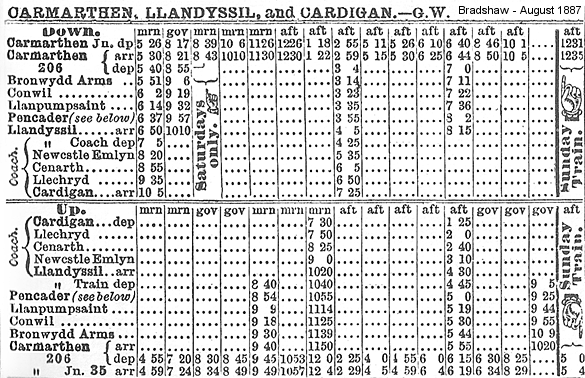

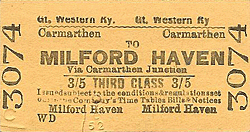


 Home Page
Home Page